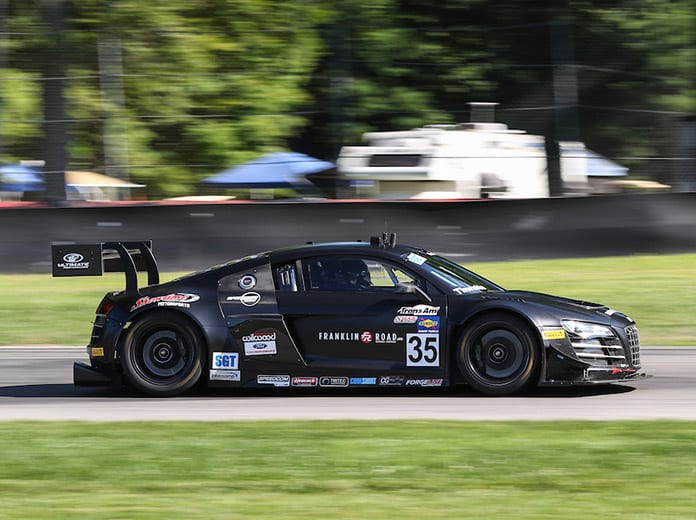MIAMI, Fla. – The Trans-Am Series presented by Pirelli will add a new production-based class to its line-up next year.
Slotted between the Trans-Am and TA2 powered by AEM classes, the new Xtreme GT class will be focused on 2016 and earlier FIA GT3 machines that are no longer eligible to race in other professional series.
Based on feedback from the paddock and continued development from the Trans Am technical staff, the new Xtreme GT class will integrate the GT3-based entries along with cars from other series and track day groups with equivalent performance potential into the new class.
“There are believed to be more than 100 GT3 race cars in North America that are no longer eligible to run in the professional series that they originally competed in,” said Trans Am Company President John Clagett. “These cars have a lot of good life remaining in them, but there are not really any good places for those cars to race competitively. The Trans Am Series intends to deliver a professionally-run series for drivers to compete in these cars and fully exhibit their potential.”
The new Xtreme GT class entries will use advanced aerodynamic parts as homologated into the original FIA GT3 specification, boasting a higher level of downforce than is utilized in the SuperGT and GT class machines in Trans Am competition.
Pirelli sets the international tire standard in GT racing and will continue that tradition with the new XGT class. All XGT cars will be outfitted with the Pirelli P Zero tires.
“At Indianapolis this season, the Audi R8 LMS GT3 car was classified into the SGT class,” said Trans Am Technical Director Aaron Coalwell. “This required significant adjustments to balance the car with the current cars in the SGT. However, it did raise a lot of interest from other teams looking for places to race their former GT3 cars. While in discussions with those teams, they specified that they would prefer running prepared to the former GT3 specifications instead of adjusting the cars to run in the SGT class. We’ve been fortunate to have a lot of positive response from our paddock, and have made the decision to start the new XGT class specifically for these cars.”
The move to add XGT into the Trans-Am regulations marks another chapter of Trans-Am Series management identifying opportunities to integrate production-based machines into the professional series, which will launch its 54th season at Sebring Int’l Raceway on Feb. 28-March 1.
At the beginning of this season, the Trans-Am Series initiated a redevelopment of its production-based classes. This integration represented a different approach by establishing a place to race for individual race teams and tuner shops, allowing them to compete with innovative and unique vehicles to showcase their abilities.
Over the season, the grid sizes continued to grow with new teams and production-based cars attending the races, bringing innovation and uniqueness between cars from the various teams back into professional racing. The entries for both classes combined were in the single digits near the beginning of the season and grew to more than a dozen by the season’s end.
The adaptation of new regulations to integrate production-based machines has not only helped provide the opportunity for teams and drivers to compete in a professional series like Trans-Am in a cost-effective way, but it also harkens back to the very first days of Trans-Am that originally featured prepared production entries that were not too far removed from street machines.
